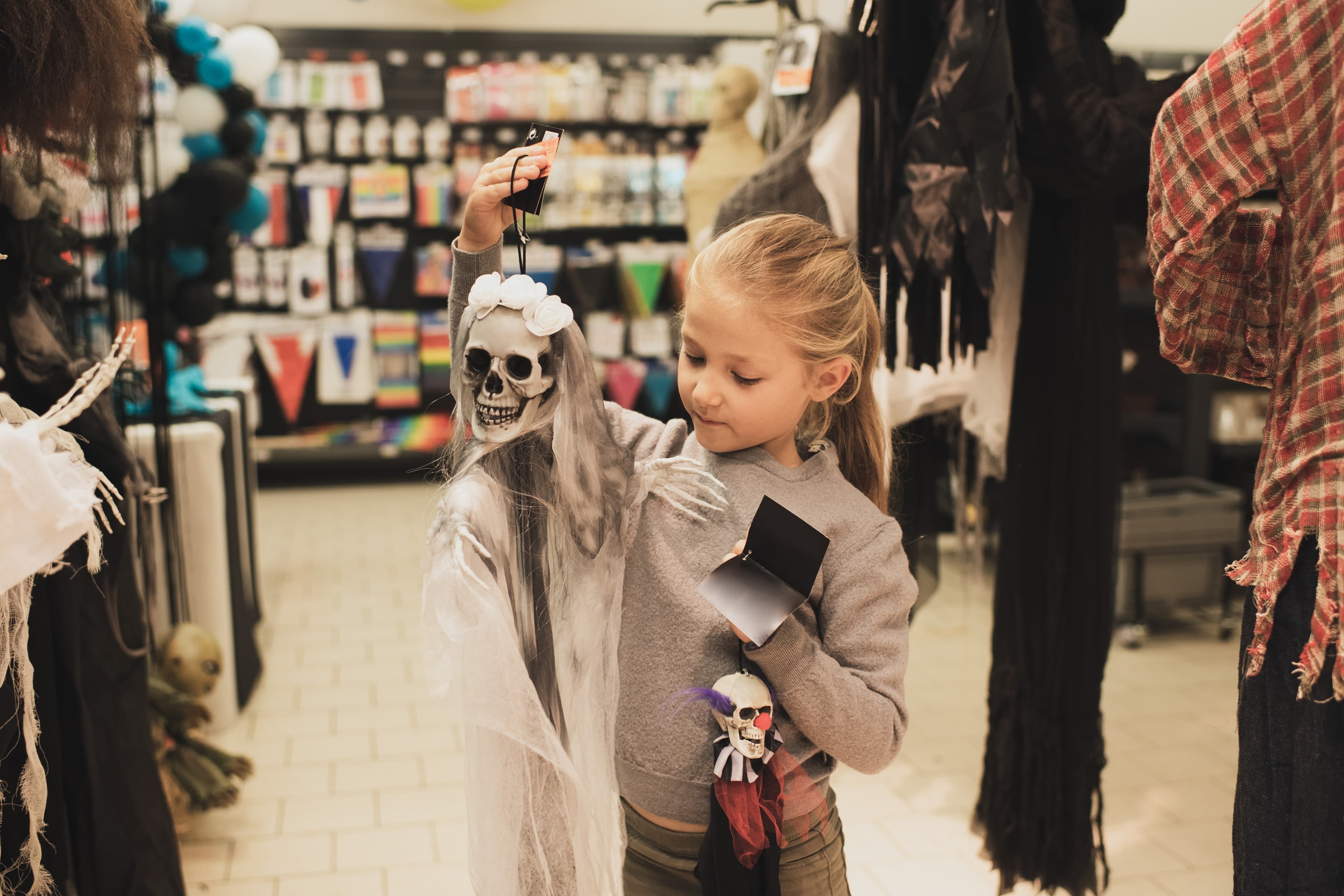Why Are Retail Brands Expanding Into Small-Format Stores?

On this page
Retail giants like Macy’s and IKEA have charted a course to explore small-format stores. These brands have built themselves market-leading reputations with their expansive, all-in-one stores. Now, though, perhaps bigger isn’t always better.
As shoppers tighten their belts and slow down on store visits, even the most established retail brands are having to rethink their growth strategies. To stay relevant, these brands need to evolve. In this blog, we’ll examine why this evolution is necessary and understand why small-format stores are fast becoming a viable investment for large retail chains.
READ MORE: Top 4 U.S. Summer Retail Trends Of 2024
Malls Evolved, So Brands Must Too
Indoor shopping malls have been at the center of the retail landscape for more than half a century. The first indoor mall opened in the U.S. in 1956. It took only a few years for thousands more to follow across the country. In the decades that followed, this new retail business model, which concentrated a great variety of offerings under one roof, became the standard.
However, the pandemic threw a spanner in the works as people were encouraged to avoid large groups, social distance, and opt for open-air activities where possible. The very things that kept malls relevant (movie theatres, restaurants, and the convenience of having everything condensed into one space) were under immense threat. The pandemic eased, but malls couldn’t breathe a long-overdue sigh of relief yet.
We know that Covid behaviors lasted far beyond the pandemic. Now, people were looking to spend time outdoors, slash spending on things and invest in experiences instead, and generally steer clear of densely populated indoor spaces. And so, the strip mall emerged to meet the evolving needs of shoppers all over the world. They offered more convenience, fewer crowds, and enabled effective BOPIS shopping for essentials like groceries, hardware, technology, and home items. While indoor malls have been slowly recovering, it is clear that both formats are essential elements in forward-thinking growth strategies.
READ MORE: Considering Mixed-Use Retail Spaces As The Future Of Malls
Small Formats Allow Further Reach
Smaller stores allow huge brands to reach shoppers living in areas where their typical big-box stores aren’t located. IKEA, for example, is bullish on these smaller stores, referred to as their “Planning Studios”. The new Planning Studios in the U.S. are approximately 8,000 to 9,000 square feet in size and specifically emphasize important aspects of urban living, like kitchens, bathrooms, and bedrooms. Ikea intends to establish additional Planning Studio locations in Rome, Tokyo, and San Francisco, among other cities. The new Planning Studios are part of the €3 billion (approximately $3.2 billion) investment by Ingka Group, Ikea's largest franchisee, in its new and existing stores. The investment also aims to develop physical stores to function as e-commerce distribution centers.
Similar to Ikea, other retailers are also experimenting with smaller stores. For instance, Best Buy opened its first small-format store in Monroe, North Carolina in July 2023, covering 5,000 square feet. Additionally, Kohl’s unveiled an experimental small-format store in Tacoma, Washington, in October, featuring a wide selection of outdoor gear to cater to the local community's preferred pastime.
Community-Specific Merchandising Powered By Data
The small-format approach is not only about shrinking the size of the store but also about tailoring the merchandise and shopping experience to align more closely with local consumer preferences. One key factor driving this strategy is the use of in-store analytics, which provides valuable data that helps retailers make informed decisions about what products to stock and how to present them.
Small-format stores allow retailers to offer a curated selection of products that are more relevant to the local market. This localization strategy helps brands connect with customers on a more personal level. Macy's, for instance, has experimented with smaller stores with their Bloomie’s concept. ModernRetail reports, “As lifestyle centers and outdoor shopping plazas take the place of old-school shopping malls anchored by department stores, Bloomie’s is an attempt to bring the brand ethos of the legacy department store to new locations and augment existing markets with a scaled-down experience.” In this way, Macy's can provide a more personalized shopping experience, making it easier for customers to find what they need. And it seems to be doing the trick.

In-store analytics play a crucial role in the retail process. These analytics involve collecting and analyzing data on customer behavior, sales patterns, and inventory levels. For example, sensors and cameras can track foot traffic, showing which areas of the store are most popular and which products attract the most attention. By analyzing this information, stores can adjust their inventory to ensure they are stocking the items that customers want. This is particularly important for small-format stores, where shelf space is limited, and every product must earn its place.
Target is another major brand that has successfully implemented small-format stores using in-store analytics. These stores are often located in urban areas or near college campuses, where the needs of the local population differ significantly from those of suburban shoppers. By using data analytics, Target can tailor its product assortment to match the preferences of these specific customer bases. For example, a small-format Target near a university might stock more dorm room essentials and quick meals, while one in a city center might focus on office supplies and ready-to-eat foods.
READ MORE: 10 Ways Technology Improves Your Retail Business
Increased Agility In An Ever-Changing Market
Small-format stores allow retailers to be more agile and responsive to changes in consumer behavior. If analytics indicate a sudden spike in demand for a particular product, stores can quickly adjust their inventory to meet this demand. Conversely, if certain products are not selling well, retailers can phase them out and replace them with more popular items. This flexibility is crucial in a rapidly changing retail landscape, where customer preferences can shift quickly.
Additionally, small-format stores provide an opportunity for brands to test new products and concepts on a smaller scale before introducing them to larger stores. By analyzing the performance of these products in a controlled environment, retailers can make data-driven decisions about whether to expand these offerings.
The expansion into small-format stores by major retail brands like Macy’s and IKEA is a strategic response to evolving consumer behaviors and market dynamics. These compact stores enable retailers to reach new communities, offering localized and curated product selections that resonate more closely with local preferences. By leveraging in-store analytics, brands can gather valuable insights into customer behaviors, allowing them to optimize inventory and enhance the shopping experience.
The shift towards smaller stores also provides increased agility, allowing retailers to quickly adapt to changes in demand and test new concepts on a manageable scale. This flexibility is essential in today’s fast-paced retail environment, where consumer preferences can change rapidly. Macy’s Bloomie’s stores and IKEA’s Planning Studios exemplify how targeted, community-specific merchandising, supported by data, can successfully engage local customers and drive growth.
As retail continues to evolve, the ability to combine the convenience of small-format stores with the power of data-driven insights will be key to staying relevant and competitive. This approach not only meets the immediate needs of diverse communities but also positions retailers for long-term success in an ever-changing market landscape.
READ MORE: Tracking The Evolution Of Luxury Retail
About the author:

Ashton Kirsten, Global Brand Manager, RetailNext
Ashton holds a Master's Degree in English and is passionate about physical retail's unbridled potential to excite, entertain, serve, and solve problems for today's shoppers.



